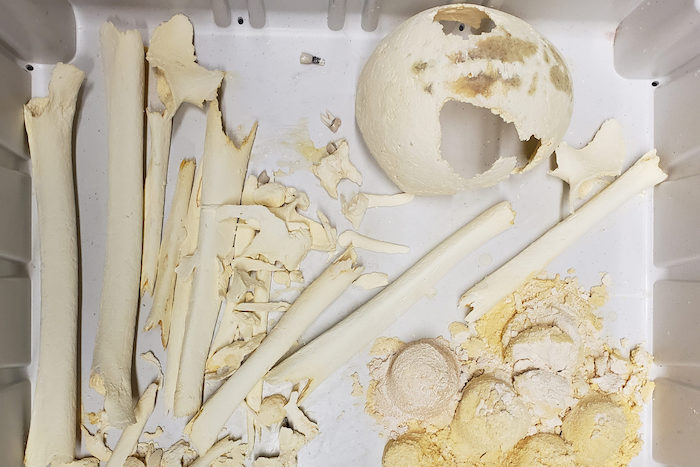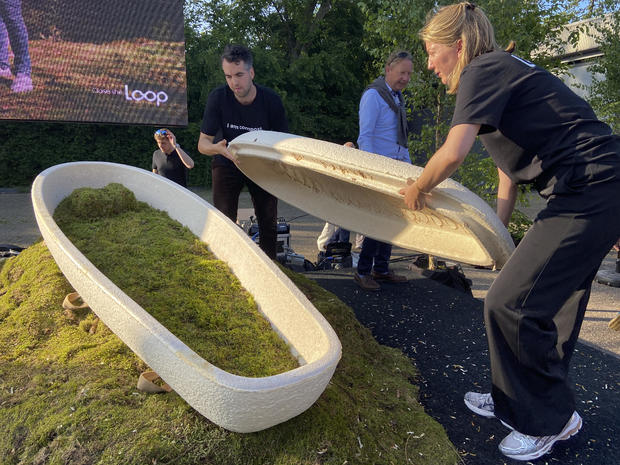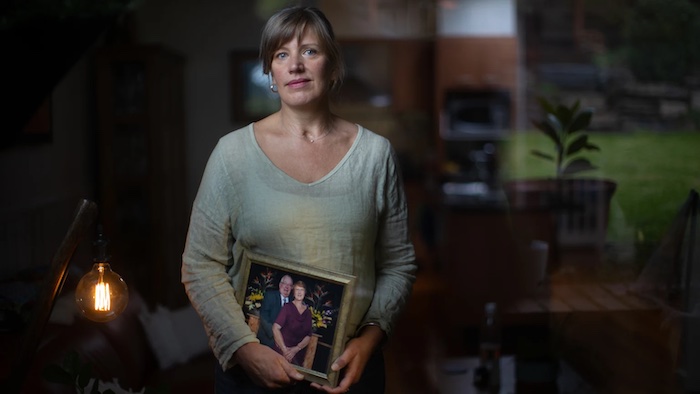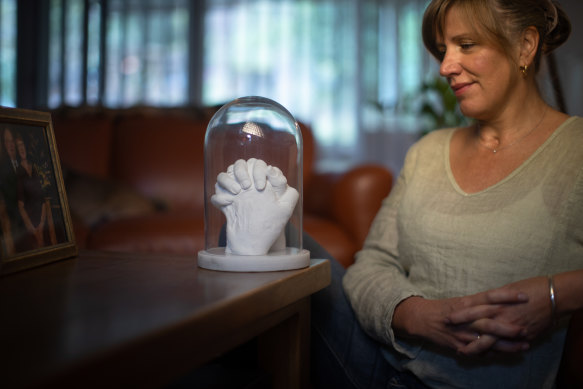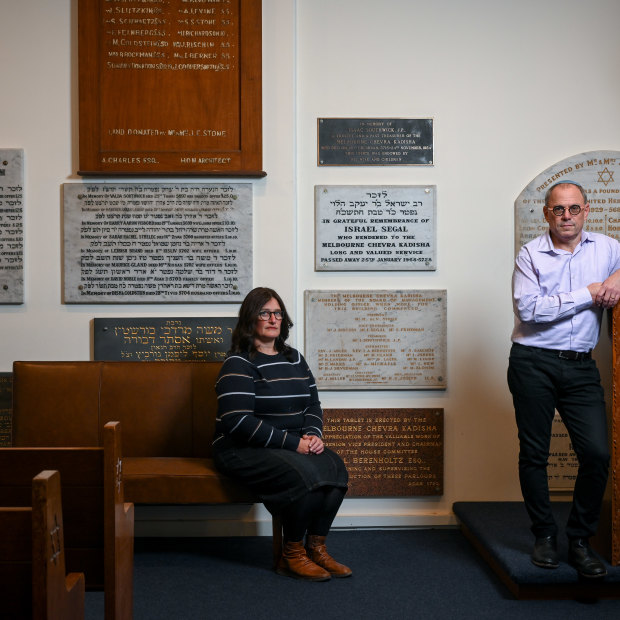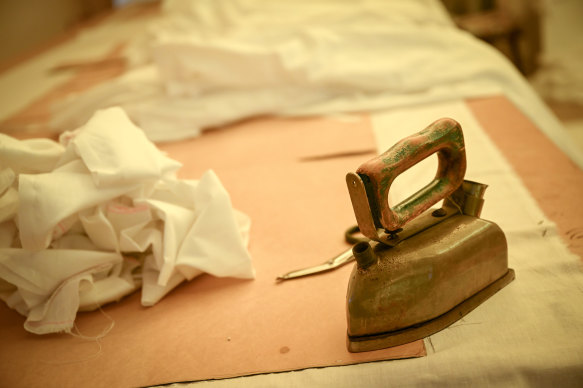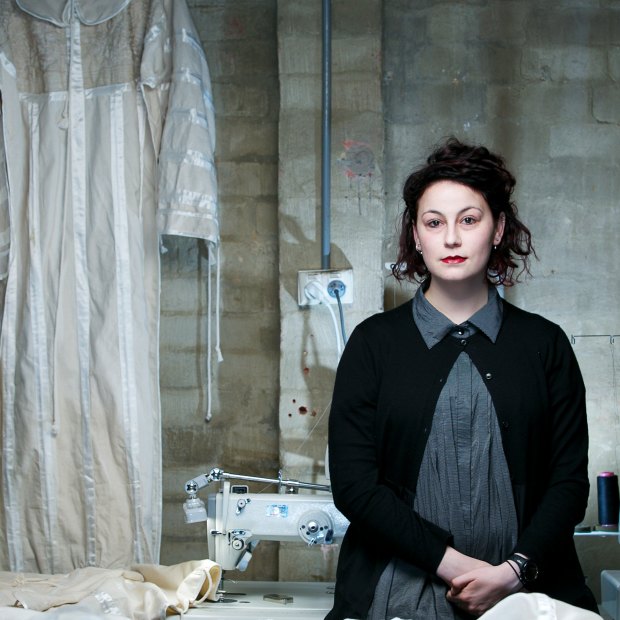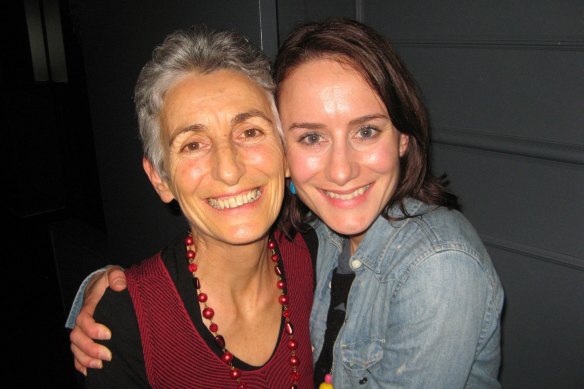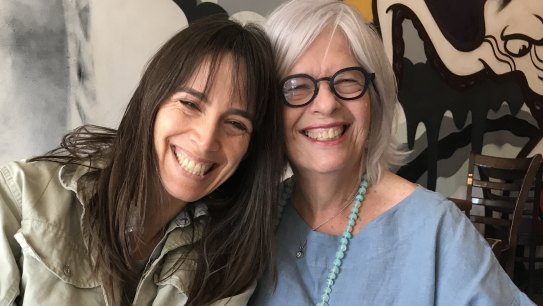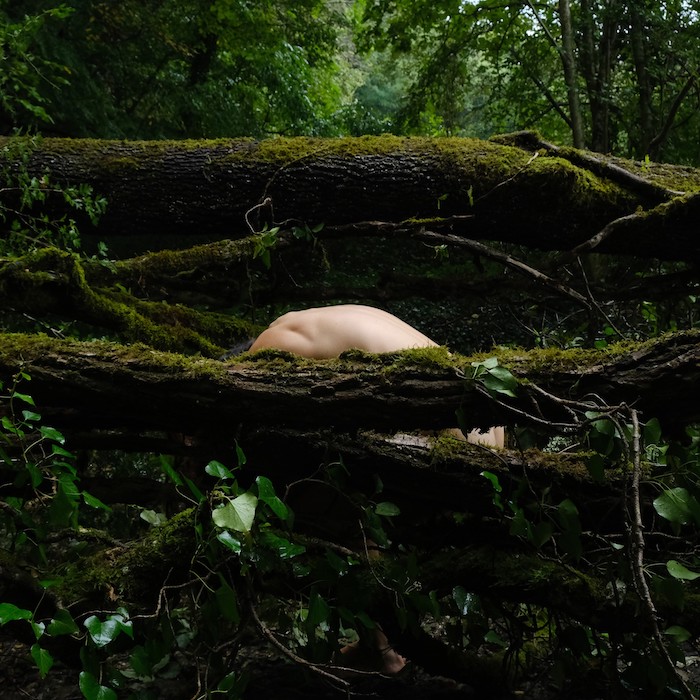— Most funeral practices leave pollution behind. Can aquamation change that?
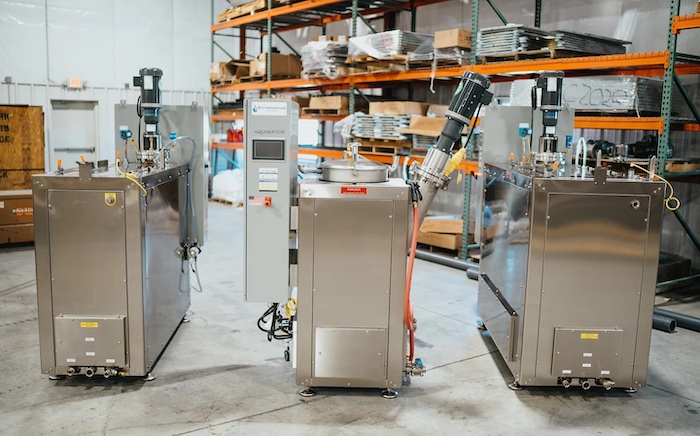
Hannah Czerwinski’s office desk isn’t decorated like most. Between pictures of her baby and papers rest vials of perfectly clean, bright white bones.
“This is Dougie,” she says, holding up a tiny glass jar of bearded dragon remnants.
Dougie is just one of many dead animals in Czerwinski’s office. Her shelves are lined with glass jars of sharp canine and cat teeth, fine powdery ground-up bones, and even delicate bat bones. They’ve all been picked clean as if their bodies had been scavenged by vultures and then bleached like a sand dollar. They look like they could turn to dust from one touch.
Czerwinski is one of around 20 employees at Bio-Response Solutions, the leading manufacturer of alkaline hydrolysis equipment worldwide. This equipment is used to reduce deceased humans and animals to liquid and ash, a method that is less energy intensive and polluting than cremation. The company is not an active funeral home and legally can’t process humans, but it does use deceased animals to show potential buyers how the equipment works. When her lizard companion passed away a few years ago, Czerwinski knew what to do. After he died, Dougie’s body was placed in one of Bio-Response’s pet systems and turned into liquid until all that remained were the bones that sit next to Czerwinski’s computer.
Tucked away in an industrial park 40 minutes outside of Indianapolis, Bio-Response is the world’s biggest manufacturer of machines that liquefy bodies with water. They ship about 100 chambers each year across the globe—a mixture of pet and human machines—to provide a more sustainable, less fuel-intensive alternative to cremation.
This process may sound macabre, but it’s not brand new. It is, however, becoming more attractive as people search for more environmentally sound death options. Alkaline hydrolysis, which Bio-Response calls aquamation, is just one in a growing list of options for consumers concerned about how their funerals may impact the environment. Other options include eco-burials, body composting, and mushroom mycelium suits. And while alkaline hydrolysis may not be talked about as frequently as the other, it’s legal in far more places, including about half of all US states for humans.
The steps are a bit different for animals like Dougie. While the human machines can only treat one body at a time, in the pet machines, multiple small bodies can be treated simultaneously because the animals are separated by metal walls, so their bones don’t get mixed up. The machine is then filled with a mixture of hot water and a caustic alkali (a liquid or solid version of sodium and potassium hydroxides). Together, the two break down the body until all that is left are bones.

Alkaline hydrolysis can sound scary, hence why it goes by so many names: aquamation and resomation being the two most popular. But really, the whole process can be understood by going back to basic chemistry. Think of a pH chart you might have seen on a science classroom wall. On one side, starting from zero, are acidic substances like lemon juice and vinegar. In the middle, at seven, is water, a purely neutral liquid. Then on the other side, things get basic. Ending at 14 are alkaline substances. Chemically, alkaline substances are the opposite of acids, but they, too, can break down organic compounds.
Crematorium owner and Bio-Response machine user Philip Flores uses potassium hydroxide as his alkali, which is just a type of lye used in soap making. “It’s a salt that helps create alkalinity when mixed with water,” he says. “So when you have the warm and gentle flow of water introduced with this alkalinity, what happens is, aside from accelerating the decomposition process, it breaks down anything that’s organic, leaving behind the inorganic, which would be the entire skeletal structure.”
In as little as 16 hours, Dougie’s small scales were broken down this way, his decaying flesh submerged in a solution of around 200 degrees Fahrenheit until all that was left were the memories of his companionship, the bones that decorate Czerwinski’s office, and a non-toxic brown liquid that smells vaguely like an unkempt pet store. If Dougie had been a human, a metal hip or breast implant may have been left behind for the machine operator to remove after his liquified body had been drained from the chamber.
To Czerwinski, alkaline hydrolysis was the clear choice for her 10-year-old lizard companion. Right around the time Dougie was born, Czerwinski’s dad, Joe Wilson, had an idea that would revolutionize the death industry: creating an American market for body-liquifying machines.
Body liquification takes off
Bio-Response officially got started on November 26, 2009, as the brainchild of Joe Wilson, who had previously worked in waste management for STERIS, a medical equipment company that focuses on infection prevention. For most, going to a medical waste conference sounds mundane, but on a crisp November day when Wilson attended one in Baltimore, he was blown away.
In the early ‘90s, the late professor Gordon Kaye of Albany Medical College faced a problem: He needed to dispose of research animals that contained radioisotopes in a safe and economically feasible way. A colleague, Peter Weber had an idea. He took a sample rat, liquified it, through alkaline hydrolysis, and returned the resulting bone powder to Kaye. It was a breakthrough, particularly for the disposal of corpses used in research contexts.
Seven years later, Wilson took his seat at a conference presentation led by Kaye. “I learned that not only did alkaline hydrolysis dissolve tissue, but it destroyed cancer drugs, embalming agents, formaldehyde, other complex chemical toxins, and was sterile,” Wilson says. “The whole idea just caught me off guard.” It was a way to sanctify the dead without burning them.
Wilson wanted to make the method useful to more professions and industries. First, he built a towable alkaline hydrolysis unit that could be transported to farms for diseased livestock disposal. This was a success, but Wilson had more ambitions: He wanted to build something that could liquefy individual people. At the time, another manufacturer was making a human-sized alkaline hydrolysis machine in Scotland, though it was expensive. This is what Wilson challenged. One night in 2010, Wilson woke up at 3 a.m. with an idea and scribbled it down. “Other people had a Rolls Royce,” he says. “I wanted to build a Chevrolet for the industry.”
What he jotted down that night became the backbone of Bio-Response today. The company, founded by Wilson four years earlier, had been selling machines for pets, appropriately called PET machines, but this changed everything. “It was a real home run,” Wilson says.
Human meets machine
Today, Bio-Response offers two options for human corpses with differing temperatures, although they custom-make machines for almost any-sized organism imaginable. “One machine went all the way up to the ceiling,” says Rob Graham, sales manager at Bio-Response.
The machines themselves are surprisingly quiet—and given the nature of the work, the mood in Bio-Response’s warehouse is surprisingly relaxed, too.. The team of builders and programmers, which Graham describes as a family, listens to music and rides around on scooters as they construct metal chambers worth hundreds of thousands of dollars. It’s like a tech startup, except instead of creating the latest AI craze, they build equipment to liquify dead people and animals. Soon, these machines will be installed in funeral homes to liquefy humans. But today, the shining silver cylinders are emitting steam as employees checked them for quality control before shipment to Las Vegas

Each machine fits one human at a time and, after being filled up with the alkaline solution, is tilted at an angle. This allows less water to be used as the body inside naturally falls into a crouching position when tilted. The machine hums for 16 to 18 hours before being drained, and the remaining bones are removed, dried, and ground into a fine dust that loved ones can take home.
But then there’s the remaining effluent, which is a fancy way to say the brown, musty liquid made of the natural byproducts of decomposition, including amino acids, salt, and sugar. To say the liquid doesn’t smell would be a lie, but it’s nothing compared to the stench of a rotting body. Aquamation practitioners then drain this effluent into the wastewater system, the same place where all of the water from sinks, toilets, showers, and washing machines go. “People are concerned that what we’re doing is drinking dead bodies,” says Philip Olson, a death studies professor at Virginia Tech who is not affiliated with Bio-Response. “There are lots of things in our wastewater system; this might be one of the least to worry about.”
Still, it does worry people, even when more traditional funerary methods process waste similarly. “During embalming, where a body is drained of blood, it is sent into the wastewater system,” Olson says. “It’s untreated.” In alkaline hydrolysis, while the waste ends up in the same place, it is treated. “It’s been sterilized by the nature of heat, which will kill anything that was living essentially,” Graham explains. There are also religious and cultural barriers to consider with aquamation as well. In the Catholic faith, alkaline hydrolysis is not an acceptable form of body disposal. This follows a history of opposition to cremation, which wasn’t allowed until the 1960s, despite the modern cremation movement beginning nearly 100 years earlier. But Wilson says strict Catholic approval isn’t stopping people. “Half the people that go through our machines are Catholics,” he estimates.

Still, perception is changing. When anti-apartheid activist and Anglican bishop Desmond Tutu died in 2021, most of the world had no idea what alkaline hydrolysis was. But Tutu did, and he had chosen to go through the process upon his death. Although Tutu was not Catholic, Graham says his death changed minds. “That knocked down on the barrier tremendously given he was known right underneath the Pope,” Graham says. To date, Bio-Response has sold more than 400 machines in North America alone.
The ultimate decision
But with the many options people have for their final rites, why choose this one? Olson says there are two main reasons. The first is that customers perceive the process as gentle, which is preferable to many over sending their loved ones to be burned by flame. “I’m not exactly sure what’s gentle about caustic alkali, but that’s how people perceive it—like a warm water bath,” Olson adds.
The second lies in its environmental benefits. Cremation uses about 30 gallons of fuel from propane or natural gas for one body, releases carcinogenic matter into the atmosphere, and returns a smaller percentage of ashes than hydrolysis. Traditional burial, too, has its downsides. In the embalming process, corpses are injected with two to three gallons of a cocktail of chemicals, including formaldehyde, mercury, and methanol. When a body is buried and decomposes, these chemicals can leak into our groundwater. “If you test the soil in a cemetery, most of that is toxic,” says Craig Klugman, a professor of death studies at DePaul University.
Then there’s the matter of space. Cemeteries around the world are filling up, leading more people to opt for methods that reduce their bodies to dust. Alkaline hydrolysis, its proponents argue, offers an alternative to land use, while cutting carbon emissions by 75 percent compared to cremation. Still, Olson warns that the process of producing alkaline substances for these machines can be energy intensive, even if direct emissions from running the machines are much lower than alternatives.
Of course, other eco-friendly options like human composting have been in the news for similar reasons. For now, this process is only legal in six states, but supporters hope it adds another option for environmentally friendly decomposition to the mix.
Wilson doesn’t oppose other methods of decomposition. In fact, he says he doesn’t worry about planning out how his own body is disposed of. “I don’t care what they do with it—I’ll be dead,” he says. Still, he prefers alkaline hydrolysis for its sterility. “There are certain microbes or diseases that will not be destroyed in composting like they will in alkaline hydrolysis,” he notes. Those residuals could end up in groundwater depending on how the remains are disposed of or repurposed, though as Wilson points out, they should not pose a real health threat to the living.
Although more than half of US states have legalized alkaline hydrolysis for humans in non-research settings, Indiana, where Bio-Response is based, isn’t one of them. “I mean, we just approved alcohol sales on Sunday five years ago,” says Graham. “Plus, Indiana is home to the largest casket manufacturer in the world.”

In Wilson’s view, the Hoosier State will probably be the last to legalize this practice. And while the timing is uncertain, Bio-Response is thriving. They’ve quadrupled their output since 2017 and now send around 100 machines annually around the globe. “If all 50 states came on at once, we might lack quality trying to outpace ourselves,” Graham says.
When he dies, if it’s in a state where alkaline hydrolysis is legal, Graham says he absolutely would choose it. “I hope I’ve made a friend that will let me ride through there,” he says. If that happens, Graham will be one in a growing group of Americans who end up churning in the warm waters of an aquamation machine until all that remains is a fine powder, a musty liquid, and memories.
Complete Article ↪HERE↩!

